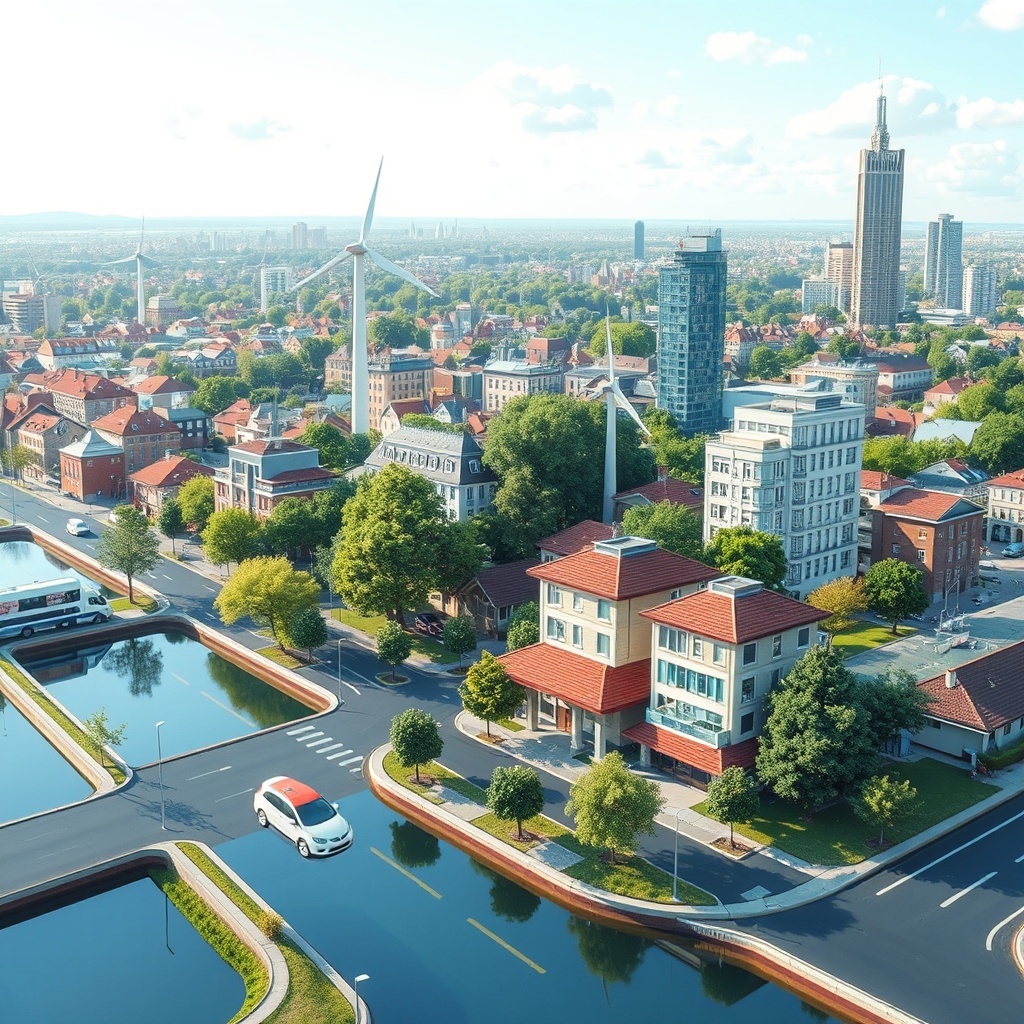Introduction
People often use the terms “biofuel” and “biomass” interchangeably. They talk about different clean energy, but it sounds like it. Biofuel and biomass are two different things. This blog post will talk about their pros and cons, as well as where Biofuel vs. Biomass fit in the energy world.
What is Biomass?
Biomass is reusable biological matter. It is made up of plants and animals.
biomass cycle involves Plants store the chemical energy from the sun through photosynthesis in biomass.
Different processes can turn biomass into liquid and gaseous fuels or burn it straight for heat.
Sources of Biomass
- Wood and Wood Residues: Forest residues, sawdust, and wood chips.
- Agricultural Residues: Crop leftovers like straw and corn stalks.
- Energy Crops: Plants specifically grown for energy production, such as switchgrass and miscanthus.
- Organic Waste: Food waste, manure, and sewage sludge.
Applications of Biomass
Biomass can be used in various ways to generate energy:
- Combustion: Direct burning to produce heat and electricity.
- Gasification: Converting biomass into syngas, which can be used for electricity or as a chemical feedstock.
- Anaerobic Digestion: Breaking down organic matter to produce biogas, which can be used for heating, electricity, or as a vehicle fuel.
What is Biofuel?
Biofuel is any fuel made from biomass, including algae, plants, and animal waste. Biofuel is a source of green energy, unlike fossil fuels like oil, coal, and natural gas, because the materials used to make it are simple to grow again.
People often promote biofuel as an environmentally friendly and cost-effective substitute for oil and other fossil fuels.
This is especially true now that oil prices are rising and people are becoming more concerned about how fossil fuels contribute to global warming.
Many opponents of the growth of some biofuels are concerned about the potential environmental and economic harm associated with their processing, as well as the potential relocation of food production to other areas of land.
Types of Biofuels
- Ethanol: An alcohol made from fermenting sugars found in crops like corn and sugarcane.
- Biodiesel: Produced from vegetable oils, animal fats, or recycled cooking grease.
- Biogas: Methane produced from anaerobic digestion of organic matter, used similarly to natural gas.
- Advanced Biofuels: Made from non-food biomass, including cellulosic ethanol and algae-based fuels.
Applications of Biofuels
Biofuels are mainly used in the transportation sector:
- Ethanol: Blended with gasoline to reduce emissions and enhance fuel efficiency.
- Biodiesel: Used in diesel engines, either pure or blended with petroleum diesel.
- Biogas: Used for heating, electricity generation, and as a vehicle fuel.
Key Differences Between Biofuel vs. Biomass
Form and Use
- Biomass: Typically solid or semi-solid and used primarily for heat and electricity production through combustion or other processes.
- Biofuel: Processed into liquid or gas forms and used primarily as a transportation fuel.
Production Process
- Biomass: Often used in its raw form or minimally processed.
- Biofuel: Requires significant processing to convert biomass into fuel.
Applications
- Biomass: Broader applications, including heat, electricity, and biogas.
- Biofuel: Primarily focused on replacing fossil fuels in transportation.
Benefits of Biomass and Biofuels
Environmental Benefits
Living things like plants and animals makeup biomass. This group encompasses everything, from waste products and algae to wood and crops.
Burning biomass is the main way that it generates heat and power.
Economic Benefits
- Job Creation: Both sectors create jobs in agriculture, processing, and distribution.
- Energy Security: Reducing dependence on imported fossil fuels.
Renewability
- Biomass: As long as we manage our forests and agricultural lands sustainably, biomass can be a renewable resource.
- Biofuels: Using non-food crops and waste materials can make biofuels a sustainable alternative to traditional fuels.
Challenges and Considerations
Sustainability
- Biomass: Requires careful management to avoid deforestation and soil degradation.
- Biofuel: Food vs. fuel debate and the impact on food prices and land use.
Technology and Efficiency
- Biomass: Combustion technology needs to be efficient to maximize energy output and minimize emissions.
- Biofuel: Advanced biofuels require significant technological development to be commercially viable.
Conclusion
To switch to clean energy, biomass, and biofuels are both very important.
Understanding the differences and potential applications of these tools can help us make more informed decisions.
Among other things, we can utilize biomass to produce energy and heat. On the other hand, biofuels are necessary to cut down on pollution from vehicles.
FAQs
What’s the main difference between biofuel and biomass?
Most people use biomass, which is organic matter, to generate heat and energy. On the other hand, we make biofuel by converting biomass into liquid or gas fuels for cars.
Is it possible to produce biofuel from biomass?
Indeed, waste can produce biofuels such as ethanol, biodiesel, and biogas.
What good does using biofuels do for the environment?
Biofuels cut down on greenhouse gas pollution, encourage recycling, and make us less reliant on fossil fuels.
Is it possible to use biofuels for an extended period?
We can make sustainable biofuels from waste materials, non-food crops, and resources in an environmentally friendly manner.
What are some problems that arise when plants produce energy?
Some of the problems that need to be solved are managing sustainability, making technology work better, and finding a good balance between using space for farming and making energy.





Leave a Reply